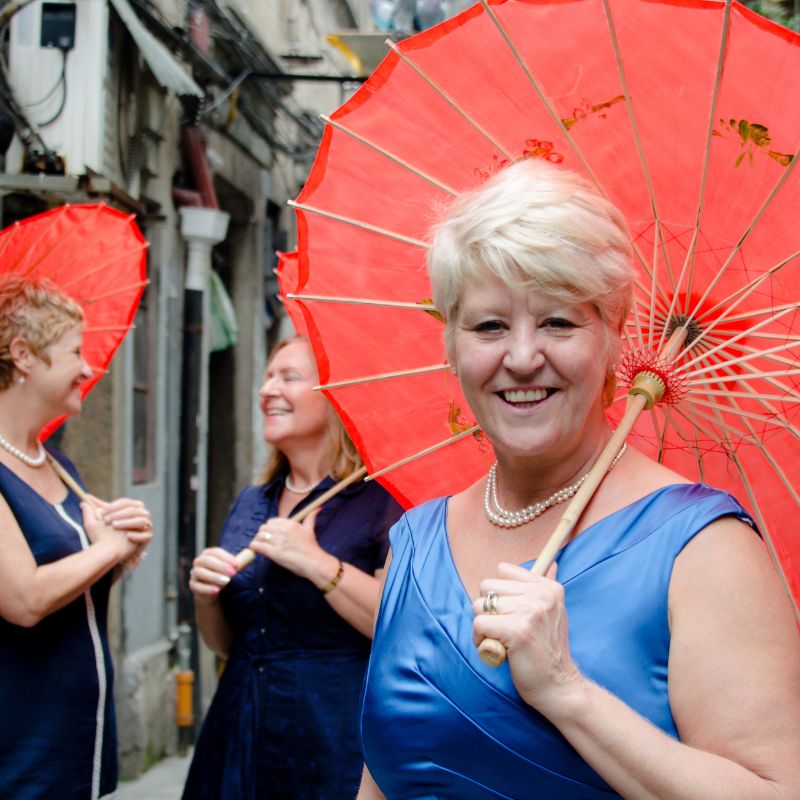What does it mean to travel like a local? For starters, it means to recognize that you really aren’t a local, you’re a visitor, but there are things you can do to blend in and gain a better sense of what life is like in the place you are visiting. After all, that’s the goal of travel, isn’t it? To gain an understanding and appreciation of how people live in different places.

If you truly tune in to your destination – the people, food, language, history, culture and scenery around you – you will experience a memorable local connection that’s worth the extra effort. Following are some things I practice before and during my travels and some things I’ve learned from the different trips I’ve taken.
How to Travel Like a Local
Being a local starts before you leave home. Read up on the places you plan to visit in advance. If you’re old school and like the feel of a guidebook, then buy one. Otherwise, use the internet. Google your destination. You’ll probably find too much information, so its important to know what you’re looking for. Choose a source you trust – one that offers a travel perspective and aesthetic similar to yours (luxury travel, sustainable travel, off the grid travel, etc).
For me its the NY Times, AFAR, and various travel bloggers who’s opinions I respect. I even use Instagram for inspiration. Inspiration is the key word–take what you read and find something similar. I watch travel programs to get ideas for where to go and what to do once I get there, but rarely will I follow their exact itinerary, because thousands of other people are already doing the same thing. As soon as hoards of people are visiting a site or a restaurant, it loses its local, authentic flavor, and in the case of a restaurant, loses it’s quality as well.
I read, watch and listen to well known sources, take note of the recommended regions, activities and restaurants, and then find something similar offered or recommended to me by a local. For example, a few years ago the Cuban restaurant Ajiaco was featured in Anthony Bourdain’s Parts Unknown. It was immediately of interest to me, but immediately off my list. I asked the owner of my apartment in Havana to suggest a similar type of restaurant (family owned, local cuisine) in the same area. She offered to take me there. On our way to her charming suggestion, Casa Grande, we drove past Ajiaco, which was completely obscured by the three huge tour buses parked out front.
Learn some local customs and a few key phrases. English is a common language most everywhere you go, but it’s a gesture of goodwill on your part if you can at least manage to say “hello” and “thank you” in the language of your host country. Sometimes before I travel, I’ll google translations of the most common phrases I’ll need to use such as: “Where is…..?”, “How much does this cost?” etc. It doesn’t matter if your accent is terrible because at least you’re trying.
Go during the low season when there aren’t that many tourists. If at all possible, travel during off season. I’ve found that if there are fewer tourists in the area, locals are generally more receptive and accommodating to visitors. Venice, in particular, is a city that should be visited in early spring, late fall, or even winter, when residents, shopkeepers and waitstaff aren’t overwhelmed (and annoyed) by crowds. When there are fewer people around, your interactions with locals will be richer and you’ll feel less like you’re part of a super-conspicuous horde of visitors.
Talk to your taxi driver…and anyone else. She or he knows a lot about wherever you are. You should be cautious, think about your safety and not give everything about yourself away, but you can still ask questions about places to eat and fun things to do. I had one of my most memorable meals of the past few years at Lo Que Hay, a local restaurant in Panama City, Panama that was recommended by my taxi driver. The key is to ask the local person where they like to go and where they like to eat in their city, and not to ask where you should go. Those are two very different questions. If you ask where you should go, you will probably get a tourist friendly answer. If you ask where they eat or spend their free time, you will probably discover unique, off the radar parks, beaches, trails, restaurants and food markets.
Be a tourist, but from a different angle. You don’t have to skip the major attractions of a region just because they are “touristy”. If you’ve never seen the Leaning Tower of Pisa or Buckingham Palace, it would be a shame to miss them while you are in the area. The secret is to figure out how to see these attractions from a different perspective. A few years ago, I struck up a conversation with the woman beside me in a Paris cafe. I explained to her that I was looking for unique ways to experience the city and she told me about a Jazz club with an amazing view of the Eiffel Tower. Bingo. I spent an incredible evening listening to jazz and gazing at the sparkling night lights of the Eiffel Tower. Just a bit more memorable than standing in a line to go up into the Tower, or standing in a group listening to someone talk about the Tower…
Eat the food they eat. The meats (smoked lamb, grilled Guanaco, tripe), fruits (horned melon, tree tomato, dragon fruit) and vegetables (sea beans, tiger nut, salt wort), you encounter during travel might not be foods you’ve ever had before, but if you pass on trying them for that reason alone, you’re missing out on one of the most local experiences you can have. Eating the food of a region instantly connects you to the people, the natural resources and the history of a place. There are always stories associated with local foods, flavors and preparation methods. Eat the foods and you will understand the people and the place. Whatever you’re used to eating back home will still be there when you get back.
Embrace the unknown. In my experience, its best if your itinerary is just a suggestion. A general framework, but a flexible one. Be willing to wander off course during your travels. Take a detour to explore a side street that calls to you, spend a few extra minutes in a cozy coffee shop or bookstore, go ahead and stop for dinner in a random restaurant that looks appealing–even if you haven’t googled it first or read its Trip Advisor ratings. Be aware of your surroundings and always take the recommended precautions, of course, but don’t be afraid to walk off the path when you feel like it. Who knows what you might find?
During one of my visits to London, I was busy crossing off the “must see” attractions on my list. By the time I arrived to Westminster Abbey, it was closed. I decided to walk around the exterior and came upon an entrance where people were being admitted to an afternoon church service. The minister told me that if I went in, I would not be permitted to leave during the 1 1/2 hour service. I hesitated, but then decided to abandon the rest of my scheduled itinerary for the afternoon and attend the service. I had no idea that I was about to experience something exquisite. The service was completely choral and was performed by the Westminster Abbey Choir. The sublime beauty and scale of the chapel combined with the otherworldly sound of the choir was a transportive and spiritual experience. The itinerary that I “ditched” didn’t contain anything remotely like that!
If you have any tips or suggestions for how you travel like a local, I’d love to hear them!
Happy travels!
